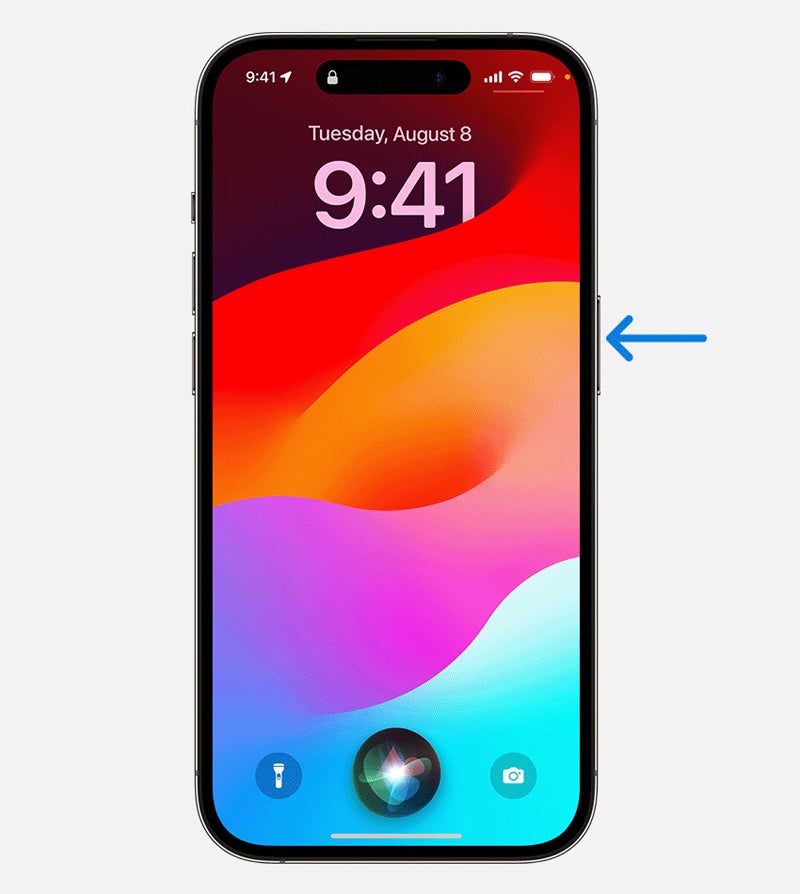For many businesses, a big part of staying competitive means using new technology to get more done in a shorter period of time. Voice-controlled assistants, such as Apple’s Siri, are innovations that can greatly help companies do just that.
Siri is a digital assistant available on many Apple devices. Using only voice recognition, it enables users to perform a wide range of daily tasks. This can save time by reducing or eliminating the physical input that would otherwise be required.
During Apple’s 2024 Worldwide Developers Conference, Siri got its biggest overhaul since it launched in 2011, thanks to its integration with a suite of generative AI capabilities called Apple Intelligence. New capabilities include on-screen awareness, in-app actions, and better understanding of natural language commands.
Read on through this guide to learn more about how to use Siri, what commands Apple’s voice assistant can recognize, and how it can help with business communication workflows.
How can Siri be used in a business environment?
Siri is designed to save time and simplify daily tasks you may encounter. Some examples may include sending text messages, getting directions to navigate to a customer website, adding reminders, and conducting web searches. Thanks to advances in fields like machine learning, Siri allows you to do all of those things, and more, without any physical input from you. If used properly, Siri can streamline many of your daily activities, increasing your productivity.
Look up contact information
If you need to find the contact information of someone on your phone, Siri can help you with that. Siri can pull up contact information for your saved contacts to include things like phone numbers, postal addresses, and email addresses.
Make phone calls
If your hands are full, Siri can help you make calls (Figure A). If contacts are stored in your phone, you can refer to them by name. If the name isn’t saved in your phone, you can also instruct Siri to call a specific phone number if you’ve memorized it.

Read and reply to text messages
Siri has the ability to read text messages out loud to you, something that can be useful if your hands are full or you’re busy with other tasks. Siri can also reply and send text messages, which can be more convenient and faster than physically typing out the messages.
Set reminders and check your calendar
If you’re on the go or constantly multitasking, it can be easy to forget about meetings, deadlines or tasks you need to do. Siri can set timers, add reminders and put events on your calendar so the likelihood of you overlooking something is greatly reduced (Figure B). You can also ask Siri to check your calendar and give you an overview of any upcoming events.

Get directions
If you’re on the go and need directions quickly, Siri can lend a helping hand. You can provide the name of a business, general description of the location or the street address. Siri has the ability to open your preferred navigation app of choice, such as Google Maps or Apple Maps, to seamlessly display travel directions on your device (Figure C).

Take notes
If you don’t have a pen or paper handy to take notes, you can use Siri for voice dictation to help you remember any important items. If you have a lot of notes to take, it can also help you save time as Siri’s voice-to-text capability is instant and much faster than typing or writing notes.
Answer questions
Siri can help answer a wide range of questions, and it also has the ability to do web searches. This can be useful for things like checking the weather, checking the hours of operation of a business, or finding out where you parked your car.

What do I need to use Siri?
To use Siri, you need a compatible Apple product (Figure D). Siri works across the Apple ecosystem and works best with the most recent software updates on the following devices:
- iPhone.
- iPad.
- Mac.
- Apple Watch.
- AirPods.
- CarPlay.
- Apple TV.
- HomePod.
How do you use Siri?
To use Siri, you need to let it know you want its help, and then speak your request. The exact methods of letting Siri know you want her help may vary from one device to another, but there are two main ways you can do it.
By default, you can get Siri’s attention by holding down the home button or action button on your Apple device. Depending on the Apple product, this may be a button on the front or side of the device. On a Mac, you also have the ability to set up a keyboard shortcut. However, if you’re looking for a hands-free experience, you can set your Apple device to listen for a wake word, such as “Siri” or “Hey Siri.” If you set it up this way, your Apple device will always listen for these wake-up words, so you can get help more easily and quickly.
When Siri has loaded, a circular icon with pink, blue, and green audio waves will appear at the bottom of the screen to show it’s listening (Figure E). Any commands and responses will then appear as text.

The new Siri, augmented with Apple Intelligence, has a slightly different look. It appears as a glowing light bar that rotates around the edges of the screen and pulses to indicate that it is listening (Figure F).

Common commands that Siri can recognize
There is a long list of commands that Siri can recognize. However, for business purposes, we have listed a few commands that are likely to be used on a regular basis. Remember that to use Siri, you must first press the home button or speak the wake word “Siri” or “Hey Siri” before saying these commands.
Users should also note that you do not always have to use the exact phrases mentioned below. Due to improvements in artificial intelligence, Siri can understand different variations of the same request.
| Action | Voting assignment | Examples |
|---|---|---|
| Find contact information on your phone | What is (name)’s contact information? | What is the phone number for Courts of McKinney? |
| Make a phone call | Call (name or phone number) | Call Mario |
| Send a text message | SMS (name or phone number) + (message) | Text Andrew I’m 10 minutes late |
| Check voicemail | Do I have voicemails? | Do I have new voicemails? |
| Read text messages out loud | Read my messages | Read my messages |
| Respond to text messages | Reply + (your message) | Answer, I will be there at 3:00 |
| Set a timer | Set a timer for (period) | Set a timer for 15 minutes |
| Add a reminder | Add a reminder (time of day) to (your task or activity) | Add a reminder to call Bill tomorrow at 3pm |
| Get travel directions | Navigate to (address or description of location) | Navigate to Courts of McKinney Tennis Center |
| Take notes using voice to text | Take notes for me + (your notes) | Take notes for me: the warehouse inventory figures must be sent to accounting |
| Do a web search, or find answers to questions | (Your question or assignment) |
|
SEE: For more ideas on how Siri can help with your day-to-day business tasks, check out our guide on Siri Shortcuts for Business Professionals.
What are some limitations of Siri?
Siri has come a long way since its initial release in 2011; however, like most pieces of software, it is not perfect and has limitations. Below are some circumstances in which Siri may not work very well.
- Background noise: Siri may not be able to recognize your voice if others are talking or you are in a noisy place.
- Accent: Siri may struggle to understand individuals with strong accents or mispronunciations of words.
- Unclear requests: If Siri can’t understand what it’s being asked to do, it can cause users to lose time by requiring them to either repeat the request or physically complete the task without Siri.
- Broad questions: In the event that a question is asked too broadly, Siri may not provide the right answer or a specific enough answer, which may force users to conduct a separate search without the help of Siri.
What privacy or security risks should businesses consider when using Siri?
Smart assistants like Siri can be prone to vulnerabilities that can expose sensitive information about the user or business. Business contacts, emails, financial information, trade secrets, and other confidential data are items that may be logged as a routine part of using Siri in a business environment. Additionally, since many Siri-enabled devices are always listening for their wake words, the possibility of private conversations being recorded without a user’s knowledge must also be considered.
Business leaders and IT professionals should consider what steps can be taken to reduce the likelihood of this happening, as well as to minimize the impact of a potential data or security breach. The scope of this should include company-provided devices as well as employee-owned personal devices.
What are the competitors for Siri?
If Siri isn’t supported on the devices used by your organization, several other companies are developing voice-controlled assistants that you can consider as alternatives:
- Amazon Alexa: This smart assistant was first introduced in the Amazon Echo speaker product and can work with many Amazon-branded products that also support voice recognition.
- Google Assistant: Google Assistant is available on Android and iOS devices and integrates with the Google ecosystem of products.
Editor’s note: This article has been updated by Fiona Jackson.
+++++++++++++++++++
TechNewsUpdates
beewire.org










